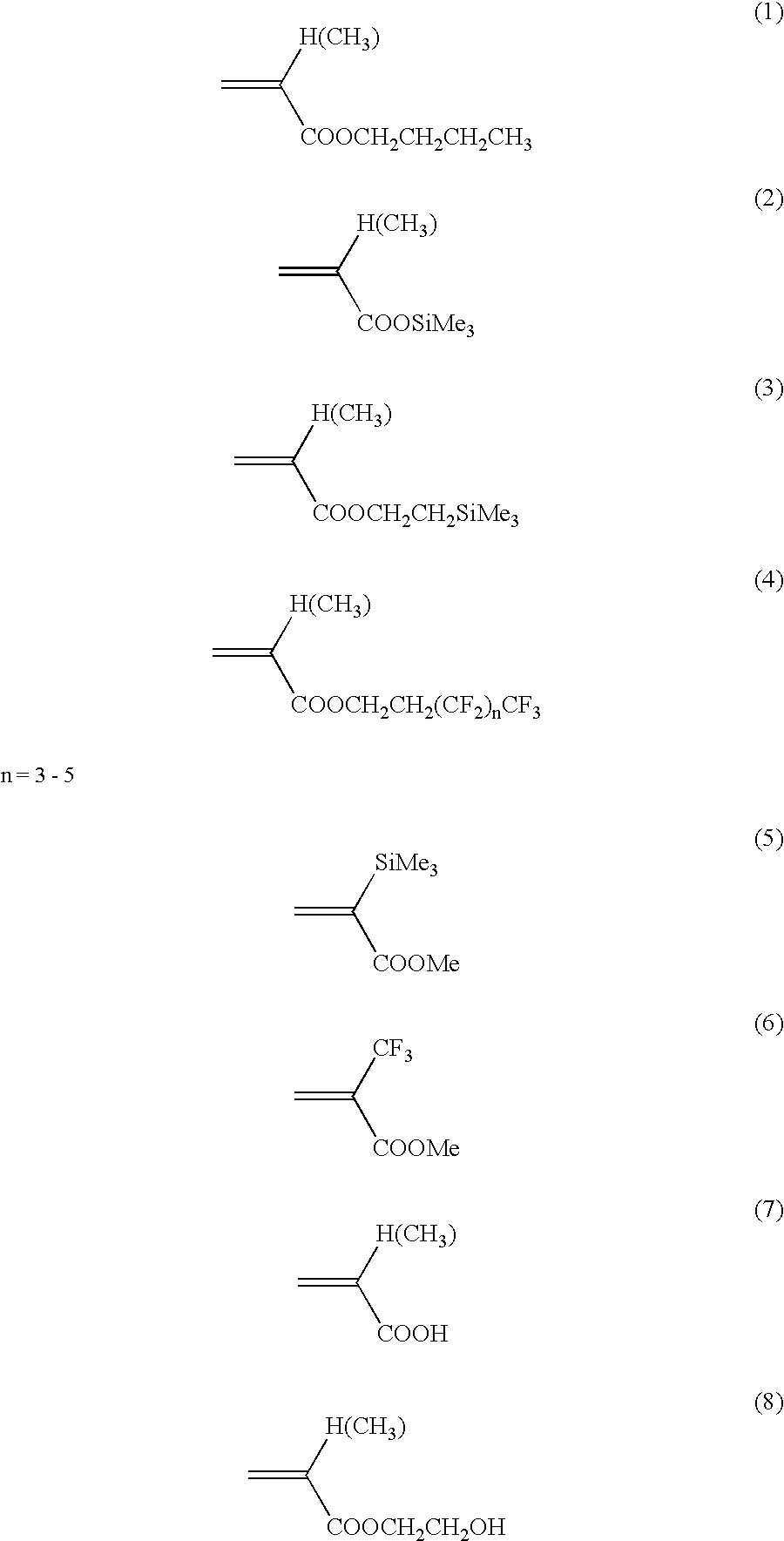Nanocomposites prepared using nanoadditive containing dispersed silicate layers or inorganic nanoparticles
a technology of inorganic nanoparticles and nanoadditives, which is applied in the field of nanocomposites, can solve the problems that the dispersion of silicate layers in the final product is not guaranteed by known processes, and achieves the effects of increasing the content of silicate layers or inorganic nanoparticles, increasing strength and modulus, and increasing tensile strength
- Summary
- Abstract
- Description
- Claims
- Application Information
AI Technical Summary
Benefits of technology
Problems solved by technology
Method used
Image
Examples
example i
[0032]Nanoadditive was prepared of matrix of atactic polystyrene of Mn 19,000 with silicate content of 20.5% as described below:
[0033]First, the photoinitiator 4-(N,N-diethyldithiocarbamylmethyl)benzyl trimethylammonium bromide was prepared as follows:
[0034]4-(N,N-diethyldithiocarbamylmethyl)benzyl trimethylammonium bromide (2). To a 1000-mL flask equipped with a stirring bar were added 4-(bromomethyl)benzyl trimethylammonium bromide (1) (prepared as described in Rammo, J., et al., Chimica Acta 251, 125-134 (1996) (8.60 g, 26.6 mmol), sodium N,N-diethyldithiocarbamate trihydrate (Aldrich) (12.0 g, 53.3 mmol), and acetone (200 mL). The mixture was stirred at room temperature for 24 hours. A white precipitate formed gradually. The precipitate was filtered and washed with technical acetone (500 mL×3). By-product NaCl can be removed as a solid by extraction with dry CHCl3 for five hours. The white powder product was dried in a vacuum oven overnight. Yield: 10.4 g, (98.0%). 1H NMR: δ (DM...
example ii
[0047]Nanoadditive was prepared of matrix of atactic polystyrene (aPS) of Mn 24,300 and silicate content of 24.7% by the method of Example I except that the amount of photoinitiator modified silicate was 1.60 grams and the amount of styrene was 20.0 mL.
[0048]STEM of the nanoadditive composition showed bundles of silicate layers parallel to one another with d-spacings of about 6-8 nm, and also single silicate layers with random orientations; this indicates that the silicate layers are dispersed in the sample. Polystyrene polymer chains were ionically attached to the silicate layers.
[0049]Solution blending was carried out of purchased syndiotactic polystyrene (sPS) (average Mn of 250,000 with broad molecular weight dispersion, syndiotactic content higher than 90%) and the nanoadditive in trichlorobenzene at 190° C. as follows with the reactive amounts and results indicated in Table 2 below.
[0050]The solution blending was carried out as follows:
[0051]To a 1-L round bottom flask equippe...
example iii
[0054]The same nanoadditive was used as in Example II.
[0055]Solution blending was carried out of commercial polypropylene pellets (isotactic polypropylene, mp 160-165° C., density of 0.900, melt index of 0.5 g / 10 min (230° C. / 21.6 kg, ASTM D 1238) and the nanoadditive in xylene at elevated temperatures as described below.
[0056]To a 1-L round bottom flask equipped with a stirring bar and a condenser were added commercial polypropylene (PP) pellets (amounts indicated in Table 3 below). For each gram of PP, 100 mL of xylene was also added. The mixture was stirred at 190° C. and maintained at this temperature with the stirring kept on until a clear solution was achieved. The polystyrene (PS) silicate nanoadditives (amounts indicated in Table 3 below) was then added to the solution. The mixture was stirred at 150° C. for 30-60 minutes to give a homogenous solution. The solution was then poured into methanol (10-fold excess). A white solid was formed, filtered and dried in a vacuum oven a...
PUM
| Property | Measurement | Unit |
|---|---|---|
| interlayer distances | aaaaa | aaaaa |
| interlayer distances | aaaaa | aaaaa |
| thickness | aaaaa | aaaaa |
Abstract
Description
Claims
Application Information
 Login to View More
Login to View More - R&D
- Intellectual Property
- Life Sciences
- Materials
- Tech Scout
- Unparalleled Data Quality
- Higher Quality Content
- 60% Fewer Hallucinations
Browse by: Latest US Patents, China's latest patents, Technical Efficacy Thesaurus, Application Domain, Technology Topic, Popular Technical Reports.
© 2025 PatSnap. All rights reserved.Legal|Privacy policy|Modern Slavery Act Transparency Statement|Sitemap|About US| Contact US: help@patsnap.com

